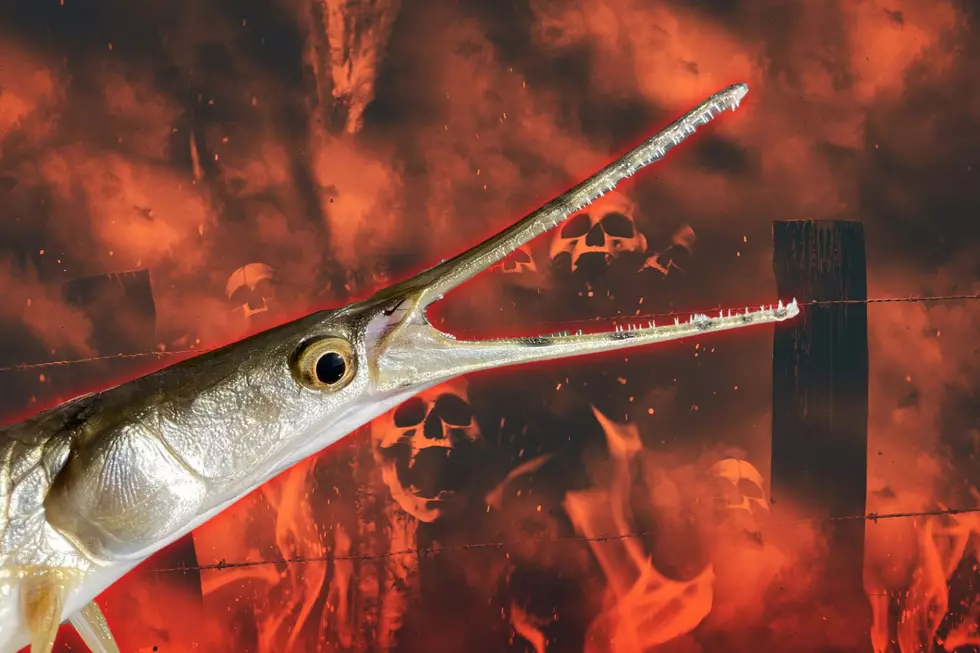
This Fish Found in Indiana Lakes Looks Like It Swam Straight Out of Hell
Imagine hooking this nightmarish creature on your next fishing trip.
The fish you'll typically find in most Indiana lakes and streams are your run-of-the-mill catfish, bluegill, bass, crappie, etc. But, lurking in the waters of many of those same lakes and streams is a breed of fish that dates back to prehistoric times, some of which can grow up to 10 feet long and weigh up to 300 pounds, and all of which feature a mouthful of sharp teeth. Allow me to introduce you to Gar.
The History of Gar in Indiana
According to the Indiana Department of Natural Resources, Gar is a native fish to the state that dates back between 65 - 100 million years ago during the Cretaceous period. The species of Gar pictured above and below is known fittingly as a Longnose Gar. Other species include Shortnose, Spotted, and Alligator.
Of the four species, it is unknown if Alligator Gar (the one that can grow to nearly 10 feet and weigh nearly 300 pounds) is currently anywhere in the state. Because of its size, many were "extirpated" (i.e. wiped out) due to their ability to destroy the area of habitat they lived in. With that said, they have been reintroduced into the Ohio River in Kentucky, Illinois, Missouri, and Arkansas, so it is possible they've found their way back to the Hoosier state.

Longnose, Shortnose, and Spotted are more common and can be found in bodies of water all across the state. They are described by the DNR as "slender, cylindrical fishes with hard, diamond-shaped and non-overlapping scales. The head and snout do not have scales but are hard and bony."
Despite Their Demonic Appearance, They are Beneficial
Even though they look like something straight out of a horror movie, Gar serves an important purpose in the areas where they live. Known as an "ambush predator" (with a face like that, what else would you expect?), they feed on smaller fish like minnows and small forage fish. They attack their prey by hovering very still near the surface of the water, then when their soon-to-be-dinner gets close, they snatch it with their mouthful of razor-sharp teeth and swallow it head first. Yikes!
How that benefits the Indiana ecosystem as a whole is that some of the fish they eat are Asian Carp. If you've ever taken a boat ride down the Ohio River in southern Indiana, chances are you've seen them leaping from the water as you troll by. They are an invasive species that can be found in waters all across the state and can be a real problem because reproduce quickly they compete with the native species in those waters for food, and if not brought under control, can reduce the number and health of the other fish.
They Are Not Harmful to Humans
Although their appearance may require a change of pants if you stumble upon one, Gar are not harmful to humans. They will only eat something they can swallow whole. However, if you manage to catch one (they are "excellent fighting fish," according to the DNR), you are more than welcome to eat it if you want. As a matter of fact, Gar are consumed regularly in many parts of the country.
To learn more about Gar, check out the Indiana Department of Natural Resources website.
WATCH OUT: These are the deadliest animals in the world
LOOK: Stunning animal photos from around the world
More From WKDQ-FM









